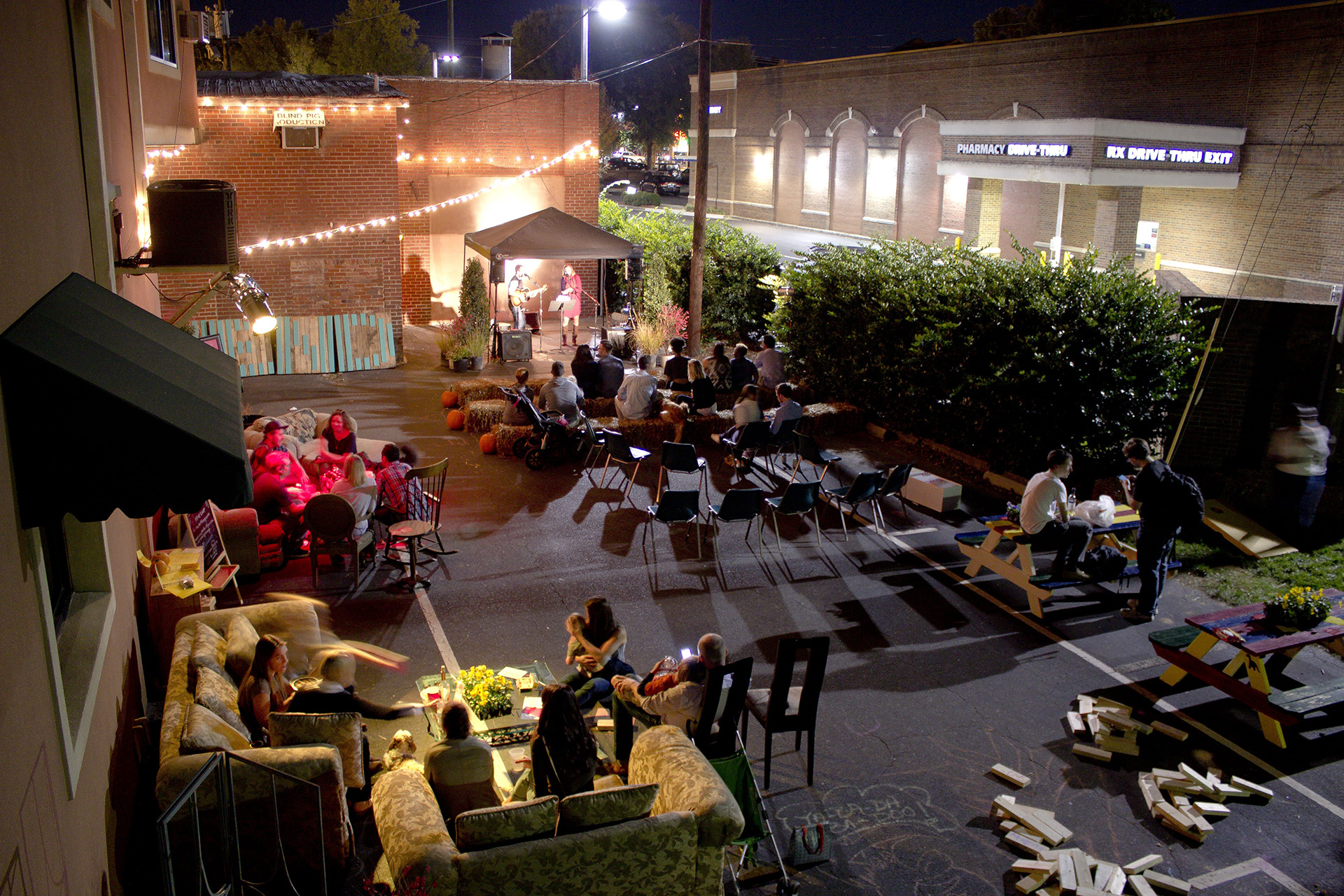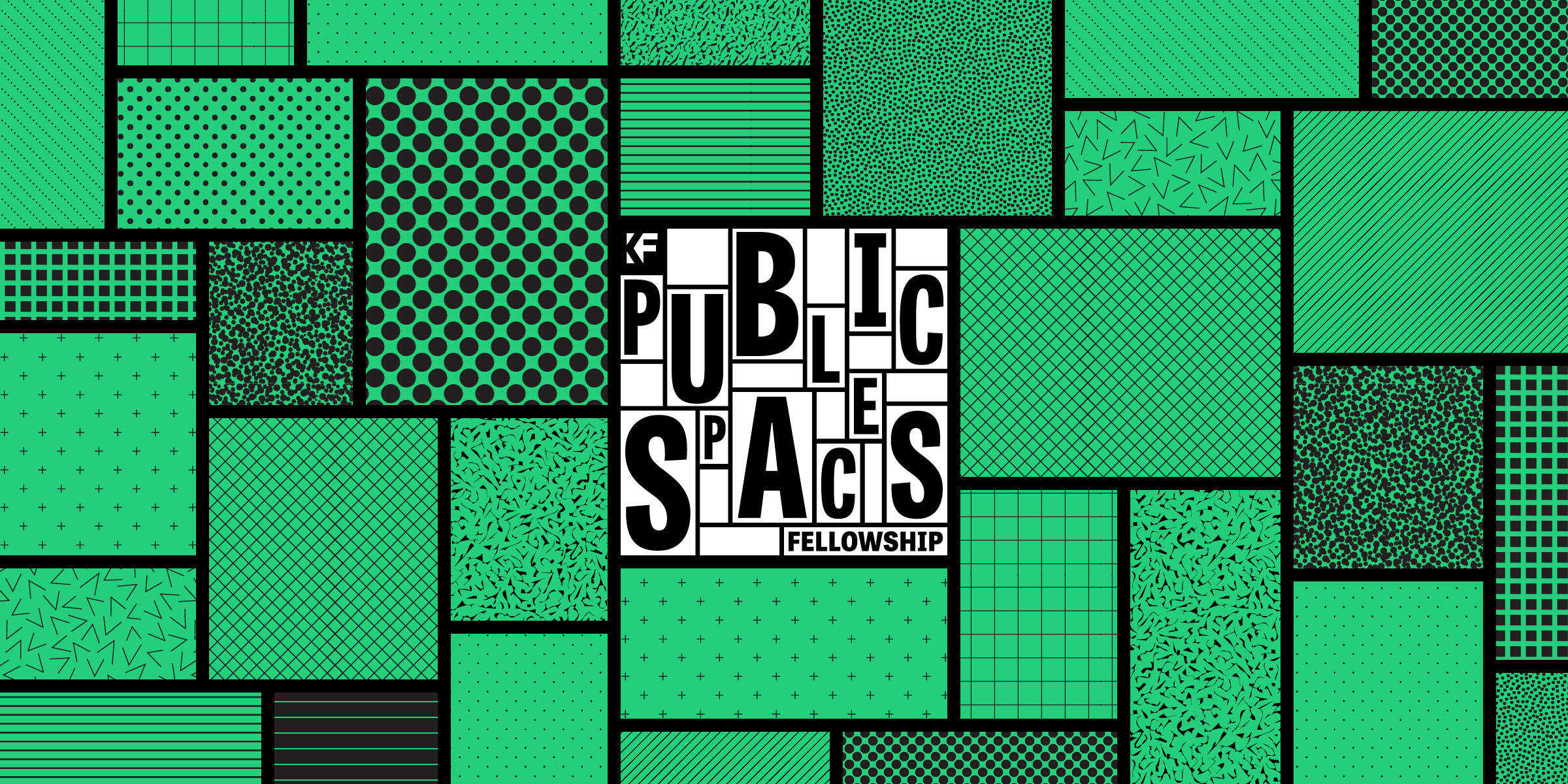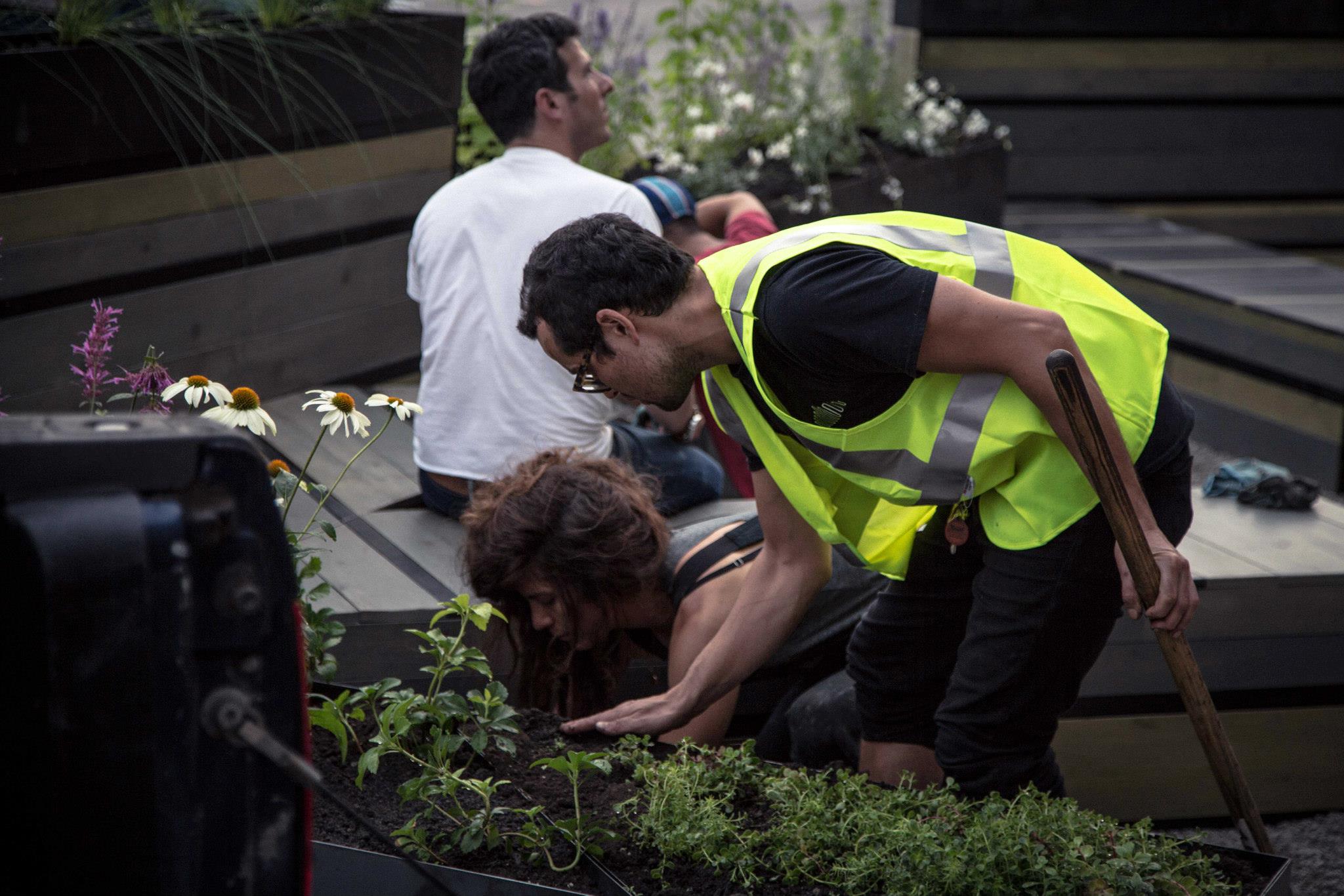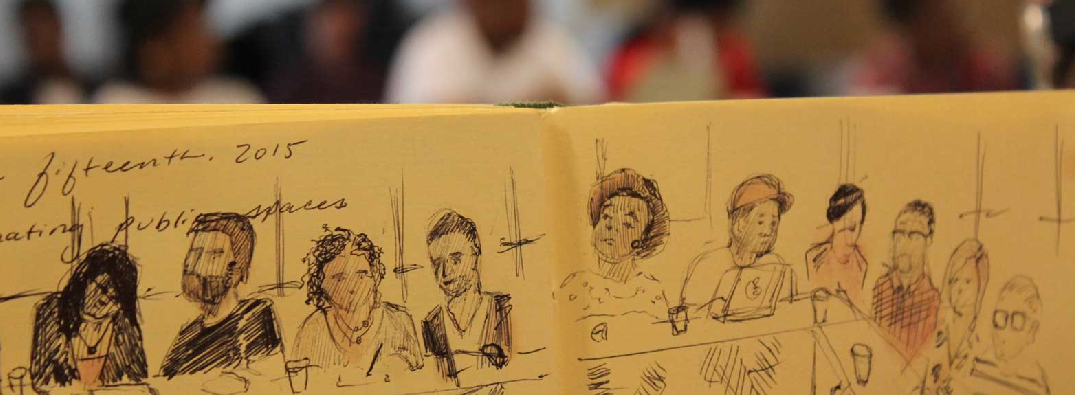To wind down Knight operating support and programmatic enhancement for Grameen America’s microlending program in San Jose.
Program Area: Community Impact
To provide capacity to the AACSA Leadership Academy that connects participants with mentors, engages them in service projects, develops civic-engagement and as a result, be more likely to graduate from high school, attend college, and be active participants in the community.
Introduction
One of the ways Knight Foundation has supported more informed and engaged communities is through a set of investments focused on public life: the spaces and places where people come together to participate in community. The goal is to connect and engage residents in their communities through more parks and public open spaces, bike and pedestrian lanes to enable people to connect, and programming that draws people together to share a common experience. Through this work, Knight has found that quality public spaces strengthen community bonds, increase civic engagement and create more opportunities for diverse communities to gather together and learn from each other.
To support and spark public life efforts, Knight Foundation made a series of grants seeking to inspire and prepare city leaders to promote public life more effectively in their communities. To build local leadership, programs exposed participants to new possibilities and provided access to national experts. The goal was to catalyze leadership and commitment to public life that would prove durable.
Activities included study tours to leading example cities, such as Copenhagen; a series of public life events and competitions that provided temporary and “pop-up” installations; fellowships for dozens of emerging leaders; a set of research tools that participants could draw on; and a variety of convenings around public art, design and city planning.
There were nine different grants across four grantees: 8 80 Cities, which seeks to create public spaces great for an 8 year old and an 80-year-old and transform cities; Better Block, which shows community members they have the power to change their neighborhoods and shows city leaders how changes would work through temporary installations; Gehl Institute, which conducted research to expand advocacy for public life; and the League of Creative Interventionists, a network of community leaders using art and culture to reimagine cities through time-limited projects in public spaces.
These grants were oriented around supporting the cultivation of public spaces and public life in communities to support several goals, including that:
- A more robust public life would attract and retain talented residents, who value well-designed public amenities.
- Public life would enhance interaction in public space and would help people push their communities to better address the needs and wishes of residents. This would be realized through inspirational interventions, including study tours and temporary demonstration projects.
- Public space activities and outcomes would reach a diversity of people from different economic and racial backgrounds. There was an aspiration that a diversity of residents interacting more with one another would support interaction and the promotion of social capital in ways that would help promote opportunity for everyone.
To assess the work done by the grantees, Knight Foundation asked Street Level Advisors and Pathline Consulting to review the programs and their impact. Based on a series of interviews, a survey, and research into grantee reporting, this report outlines their findings.
Grantees at a Glance
8 80 Cities, which creates public spaces great for an 8-year-old and an 80-year-old to transform cities. It provides leadership development and funding for young civic innovators with unique solutions to improve public spaces, transportation and civic engagement in their cities. 8 80’s activities include study tours to Copenhagen and direct work in cities. Twenty community leaders also are chosen each year to participate as Emerging City Champions.
Better Block, which shows community members they have the power to change their neighborhoods and shows city leaders how changes would work through temporary installations. It seeks to create opportunities for communities and their existing and emerging leaders to gain exposure to and training from urban planning experts, civic innovators and architects from around the world through global symposiums as well as study tours to show successful examples of initiatives around the world.
Gehl Institute, which conducted research to expand advocacy for public life. Gehl offered trainings and public programs as well as developing tools for the study of public space and public life. As of April 1, 2019, Gehl Institute focuses exclusively on the Public Life Data Protocol, an open data standard.
League of Creative Interventionists, a network of community leaders using art and culture to reimagine cities through time-limited projects in public spaces. Its fellowship program identifies and catalyzes passionate neighborhood residents to discover their leadership and co-create what they want to see in their communities. The program provides each fellow with an artist stipend, guides, resources and tools to reimagine their neighborhood with powerful acts of culture and also access to a valuable national network of peers and mentors.
Key Findings
Inspiring new activity and leadership
There is clear evidence that the programs succeeded in inspiring community leaders to strengthen public life, and in some cases influenced participants’ career trajectories. Multiple public life programs were expanded or replicated by local leaders, and several new organizations were created.
Attracting investment
Grantee activities led to increased public and private investment in public space and life. Public investments included protected bike lanes and other bicycle infrastructure, as well as funding for parks and green space. One city created a new Office of Public Life. In almost all examples of increased government investment in public space, interviewees cited the study tours as a critical contributing factor. In two cases, grantees worked to ensure that bond funds, each totaling more than $40 million, incorporated public life considerations.
Influencing public policy
Programs led city officials to improve public life decision-making processes. In several examples, temporary interventions inspired local officials to incorporate new processes to reach a broader cross-section of residents, and to reconstitute public committees that had long been dormant. Almost a quarter of surveyed Copenhagen trip participants established a bicycle plan for their cities, 12 percent created a bicycling/pedestrian committee, Macon reconstituted a dormant bike committee and is working on a bike plan and 5 percent now have bicycle safety courses planned.
In addition to these impacts, some critical strategic questions also emerged:
Inspiration vs. escalation
The programs have clearly served to inspire individuals and many said the programs raised their visibility and supported their leadership. However, some participants hoped for more support on logistics, financing and policy processes to help them transform inspiration into concrete outcomes.
The right model and approach
A few interviewees questioned whether the foreign cities visited were the best model for all U.S. communities given differences around issues like comparative racial diversity and economic inequality.
Inclusive and authentic engagement
Several people interviewed wanted to ensure that the projects had diverse participation at all levels, from grantees to those leading community interventions to the public being served. Greater diversity among leadership teams contributed to more inclusive community participation in local programs and events, and lessened concerns that activities might contribute to displacement of current residents.
Holistic approach
Findings suggested that further coordination across strategies and grantees could be beneficial. Participants sometimes worked with more than one grantee and grantees sometimes partnered on events. But such partnerships were more accidental than intentional. There was a sense that increasing these connections in more intentional ways would benefit participants and the public.
About the John S. and James L. Knight Foundation
Knight Foundation is a national foundation with strong local roots. We invest in journalism, in the arts, and in the success of cities where brothers John S. and James L. Knight once published newspapers. Our goal is to foster informed and engaged communities, which we believe are essential for a healthy democracy. For more, visit kf.org.
-
Community Impact / Press Release
-
Community Impact / Press Release
-
Community Impact / Article
- Supporting Public Life in American CitiesExternal Content / Website
MIAMI—April 8, 2019—Emerging City Champions, a program supported by the John S. and James L. Knight Foundation, is now accepting applications for its 2019-2020 fellowship, which provides young civic innovators with seed funding, leadership training and practical tools to launch transformative projects to enhance public space, urban mobility or civic engagement in their city. Knight Foundation today announced a $500,000 reinvestment in the program.
The Emerging City Champions fellowship is open to applicants between the ages of 19 and 35 with project ideas that take place in or benefit one of the 26 communities where Knight invests. Past projects have ranged from beehives to jukeboxes, mentorship programs to murals, block parties to storytelling bike tours.
The deadline to apply is Sunday, May 12, 2019 at 11:59 p.m. EST. Successful applicants will be awarded $5,000 for their project, attend an immersive four-day learning experience, and receive ongoing mentorship, networking, and capacity building opportunities. Visit emergingcitychampions.org for more information and to apply.
“Since 2015, this effort has uncovered new talent and new ideas that are already making a difference in cities,” said Sam Gill, Knight Foundation vice president for communities and impact. “We can’t wait for the next set of emerging leaders who are driving the future of informed and engaged communities.
“Emerging City Champions brings together civic leaders who all share a common drive to build equitable and vibrant cities,” said Amanda O’Rourke, executive director, 8 80 Cities. “Each year, we are thrilled to support the diverse, community-driven projects that participants bring to their communities. We look forward to seeing what ideas this year’s competition will bring.”
Launched in 2015 with Knight Foundation support, Emerging City Champions is an incubator for up-and-coming city leaders with bold ideas to build more accessible, inclusive and connected cities. Some applicants may be seeking to scale up an existing neighborhood project, while others may have innovative and untested solutions to improve their local streets or public spaces. The program encourages diverse voices and fresh perspectives toward common urban challenges.
By offering training, resources, connections and seed funding, Emerging City Champions helps participants harness their own ingenuity and collaborative partnerships to create real community change. The training begins with the Emerging City Champions Studio in Toronto, Canada. The Studio is an immersive four-day learning experience where fellowship participants hone their skills as civic leaders with interactive tours of community-led programs and public spaces, presentations by city leaders and program alumni, and hands-on workshops on project planning, community engagement, communication, and tactical urbanism.
Past Emerging City Champions participants have made significant improvements to their communities. Using their skills as musicians, educators, mechanics, artists, or small business owners, they have created neighborhood programs, community events, interactive public art, and vibrant public spaces that have pushed boundaries, changed mindsets, and in some cases inspired long-term investment in the public realm. These program alumni also form the growing Emerging City Champions network, supporting future participants in their community.
Emerging City Champions is led by 8 80 Cities, a nonprofit organization committed to improving the quality of life for people in cities by bringing citizens together to enhance mobility and public space.
Support for 8 80 Cities forms one part of Knight Foundation’s efforts to help cities attract and keep talented people, expand economic opportunity and create a culture of engagement. The foundation believes that successful communities are equitable, inclusive and participatory.
For more information on 8 80 Cities, visit: 880cities.org. To apply to the Emerging City Champions Fellowship, submit your application at emergingcitychampions.org by May 12, 2019.
About 8 80 Cities
8 80 Cities is a nonprofit organization based in Toronto, Canada. We are dedicated to contributing to the transformation of cities into places where people can walk, bike, access public transit and visit vibrant parks and public places. Our approach is to engage people and communities across multiple sectors to inspire the creation of cities that are easily accessible, safe and enjoyable for all. We achieve our mission through grant projects, advocacy work and our innovative services.
About the John S. and James L. Knight Foundation
Knight Foundation is a national foundation with strong local roots. We invest in journalism, in the arts, and in the success of cities where brothers John S. and James L. Knight once published newspapers. Our goal is to foster informed and engaged communities, which we believe are essential for a healthy democracy. For more, visit kf.org.
Contacts:
Ryan O’Connor, Director of Programs, 8 80 Cities, 416-591-7404, [email protected]
Anusha Alikhan, Director of Communications, John S. and James L. Knight Foundation, 305-908-2646, [email protected]
Image (top): Charlotte Living Room Project by Varian Shrum, a 2015 Emerging City Champion. Credit: Mert Jones.
-
Community Impact / Press Release
-
Community Impact / Press Release
-
Community Impact / Press Release
To support civic engagement in Knight communities by enabling legal permanent residents to become naturalized citizens.
This is a request for funding for Channon Lemon and Jason Barnett for the travel costs and a small stipend to join a Saint Paul delegation to the country of Sweden.
To support the growth of the Catalyze SV (CSV) project, which brings together community members, civic leaders and developers to advance projects, by growing full-time staff and formalizing a model to create constructive civic engagement.
To provide training and resources to residents of Detroit, Hamtramck, and Highland Park to inform their understanding of real estate development in their neighborhoods and to connect them to a growing local network of like-minded city builders.
To support the creation of Creators Council, a member-led, peer-sharing and mentorship platform.
To support up to 5 Knight Communities to participate in a learning exchange at the Greater & Greener Conference, strengthening the network of people and organizations working to improve city parks and public spaces.
The grant will fund the High Line’s 2019 Network Symposium, which will support industrial reuse project leaders from Knight Cities to connect around the transformation of underutilized public spaces.




